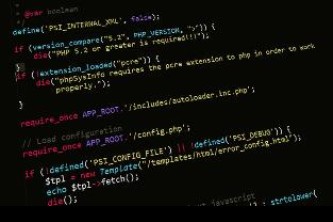Java后台如何发送JSON:全面指南与实践
在Java后台开发中,JSON(JavaScript Object Notation)因其轻量级、易读性和跨语言特性,已成为前后端数据交互的主流格式,无论是RESTful API的响应、微服务间的通信,还是第三方接口的调用,后台发送JSON数据都是高频需求,本文将详细介绍Java后台发送JSON的多种方式,从原生实现到主流框架集成,并结合代码示例和最佳实践,帮助开发者高效这一技能。
发送JSON的核心场景与准备工作
在开始具体实现前,需明确两个核心问题:发送JSON的场景和前置准备。
常见发送场景
- RESTful API响应:后台接口返回JSON格式的数据给前端(如返回用户信息、列表数据等)。
- HTTP客户端请求:后台作为客户端,向第三方服务(如支付接口、消息队列API)发送JSON数据(如提交订单、发送消息等)。
- 微服务间调用:通过HTTP或RPC框架(如Feign)服务间传递JSON数据。
- 消息队列发送:向Kafka、RabbitMQ等消息队列发送JSON格式的消息体。
前置准备
-
JSON库依赖:Java中需借助第三方库处理JSON数据,常用库包括:
- Jackson:高性能,Spring Boot默认集成,功能全面(序列化/反序列化、JSON流处理等)。
- Gson:Google开发,API简洁,易用性高。
- Fastjson:阿里开发,解析速度快,但需注意版本安全性(建议使用1.2.83+)。
- org.json:轻量级,适合简单JSON操作,但功能相对基础。
本文以Jackson(主流且推荐)和Gson(易用)为例展开,其他库可参考类似逻辑实现。
原生Java实现:使用HttpURLConnection发送JSON
若不想引入第三方HTTP客户端框架,可通过Java原生HttpURLConnection发送JSON数据,这种方式无需额外依赖,但代码相对繁琐,适合简单场景或学习理解HTTP协议。
核心步骤
- 构造URL对象,打开HTTP连接。
- 设置请求方法(POST/PUT等)、请求头(
Content-Type: application/json)。 - 启用输出流,将JSON字符串写入请求体。
- 获取响应码和响应数据。
代码示例
(1)添加Jackson依赖(用于Java对象转JSON)
<!-- pom.xml -->
<dependency>
<groupId>com.fasterxml.jackson.core</groupId>
<artifactId>jackson-databind</artifactId>
<version>2.15.2</version>
</dependency>
(2)发送JSON的完整代码
import com.fasterxml.jackson.databind.ObjectMapper;
import java.io.BufferedReader;
import java.io.OutputStream;
import java.net.HttpURLConnection;
import java.net.URL;
public class NativeJsonSender {
public static void main(String[] args) throws Exception {
// 1. 准备JSON数据(Java对象转JSON字符串)
User user = new User("张三", 25, "zhangsan@example.com");
ObjectMapper objectMapper = new ObjectMapper();
String jsonInput = objectMapper.writeValueAsString(user);
// 2. 创建HTTP连接
URL url = new URL("https://api.example.com/users");
HttpURLConnection connection = (HttpURLConnection) url.openConnection();
connection.setRequestMethod("POST");
connection.setRequestProperty("Content-Type", "application/json");
connection.setRequestProperty("Accept", "application/json");
connection.setDoOutput(true); // 允许发送请求体
// 3. 发送JSON数据
try (OutputStream os = connection.getOutputStream()) {
byte[] input = jsonInput.getBytes("utf-8");
os.write(input, 0, input.length);
}
// 4. 获取响应
int responseCode = connection.getResponseCode();
System.out.println("Response Code: " + responseCode);
try (BufferedReader br = new BufferedReader(
new java.io.InputStreamReader(connection.getInputStream(), "utf-8"))) {
StringBuilder response = new StringBuilder();
String responseLine;
while ((responseLine = br.readLine()) != null) {
response.append(responseLine.trim());
}
System.out.println("Response Body: " + response.toString());
}
connection.disconnect();
}
// 示例Java对象
static class User {
private String name;
private int age;
private String email;
public User(String name, int age, String email) {
this.name = name;
this.age = age;
this.email = email;
}
// Getter和Setter(省略,实际开发中需添加)
}
}
注意事项
- 需手动处理连接异常(如超时、网络错误)、流关闭(使用try-with-resources)。
- JSON序列化需确保Java对象有无参构造器(Jackson默认要求)。
- 请求头
Content-Type必须设置为application/json,否则接收方可能无法正确解析。
使用Spring Boot框架:自动集成与简化开发
Spring Boot是目前Java后台开发的主流框架,其对JSON的支持已高度简化,默认集成Jackson,通过@RestController和@RequestBody注解即可完成JSON的发送与接收。
核心注解与原理
- @RestController:组合了
@Controller和@ResponseBody,标识该Controller的所有方法返回JSON数据(自动序列化)。 - @RequestBody:标注在方法参数上,将请求体中的JSON数据自动反序列化为Java对象(用于接收JSON)。
- HttpEntity:可通过
ResponseEntity自定义响应状态码、头信息和JSON数据。
示例代码
(1)Spring Boot项目依赖(默认包含Jackson)
<!-- pom.xml -->
<parent>
<groupId>org.springframework.boot</groupId>
<artifactId>spring-boot-starter-parent</artifactId>
<version>3.1.5</version>
</parent>
<dependencies>
<dependency>
<groupId>org.springframework.boot</groupId>
<artifactId>spring-boot-starter-web</artifactId>
</dependency>
</dependencies>
(2)Controller层发送JSON响应
import org.springframework.web.bind.annotation.*;
@RestController
@RequestMapping("/api/users")
public class UserController {
// 示例1:直接返回Java对象,自动序列化为JSON
@GetMapping("/{id}")
public User getUser(@PathVariable Long id) {
// 模拟从数据库查询用户
return new User("李四", 30, "lisi@example.com");
}
// 示例2:使用ResponseEntity自定义响应(状态码、头信息、JSON数据)
@PostMapping
public ResponseEntity<String> createUser(@RequestBody User user) {
// 模拟保存用户到数据库
System.out.println("Received user: " + user.getName());
// 返回自定义响应
return ResponseEntity.status(201)
.header("Custom-Header", "created")
.body("User created successfully: " + user.getName());
}
// 示例3:返回复杂JSON结构(List嵌套对象)
@GetMapping("/list")
public List<User> getUserList() {
return Arrays.asList(
new User("王五", 25, "wangwu@example.com"),
new User("赵六", 28, "zhaoliu@example.com")
);
}
}
(3)Java对象定义(需无参构造器、Getter/Setter)
public class User {
private String name;
private int age;
private String email;
// 无参构造器(Jackson反序列化需要)
public User() {}
// 全参构造器
public User(String name, int age, String email) {
this.name = name;
this.age = age;
this.email = email;
}
// Getter和Setter
public String getName() { return name; }
public void setName(String name) { this.name = name; }
public int getAge() { return age; }
public void setAge(int age) { this.age = age; }
public String getEmail() { return email; }
public void setEmail(String email) { this.email = email; }
}
关键点说明
- Spring Boot默认使用Jackson进行JSON序列化/反序列化,无需手动配置(除非需自定义ObjectMapper)。
@RequestBody会自动将请求体的JSON数据转换为Java对象,需确保字段名与JSON key一致(可通过@JsonProperty注解映射)。- 返回对象时,Spring Boot会自动调用Jackson的
ObjectMapper.writeValueAsString()转换为JSON,并设置Content-Type: application/json。
使用第三方HTTP客户端:发送JSON到远程服务
当Java后台需要作为客户端,向远程服务(如第三方API、微服务)发送JSON数据时,可使用成熟的HTTP客户端框架,如Apache HttpClient、OkHttp或Spring RestTemplate/WebClient(Spring生态)。
抖音足球直播
抖音足球直播
企鹅直播
企鹅直播
足球直播
爱奇艺直播
爱奇艺足球直播
足球直播
足球直播
iqiyi直播
足球直播
足球直播
QQ足球直播
QQ足球直播
足球直播
足球直播
QQ足球直播
QQ足球直播
足球直播
足球直播
快连
快连
快连
快连下载
快连
足球直播
足球直播
足球直播
足球直播
足球直播
足球直播
足球直播
足球直播
足球直播
新浪足球直播
新浪足球直播
足球直播
足球直播
有道翻译
有道翻译
有道翻译
有道翻译
wps
wps
wps
wps
足球直播
足球直播
足球直播
足球直播
足球直播
足球直播
足球直播
足球直播
新浪足球直播
新浪足球直播
足球直播
足球直播







还没有评论,来说两句吧...